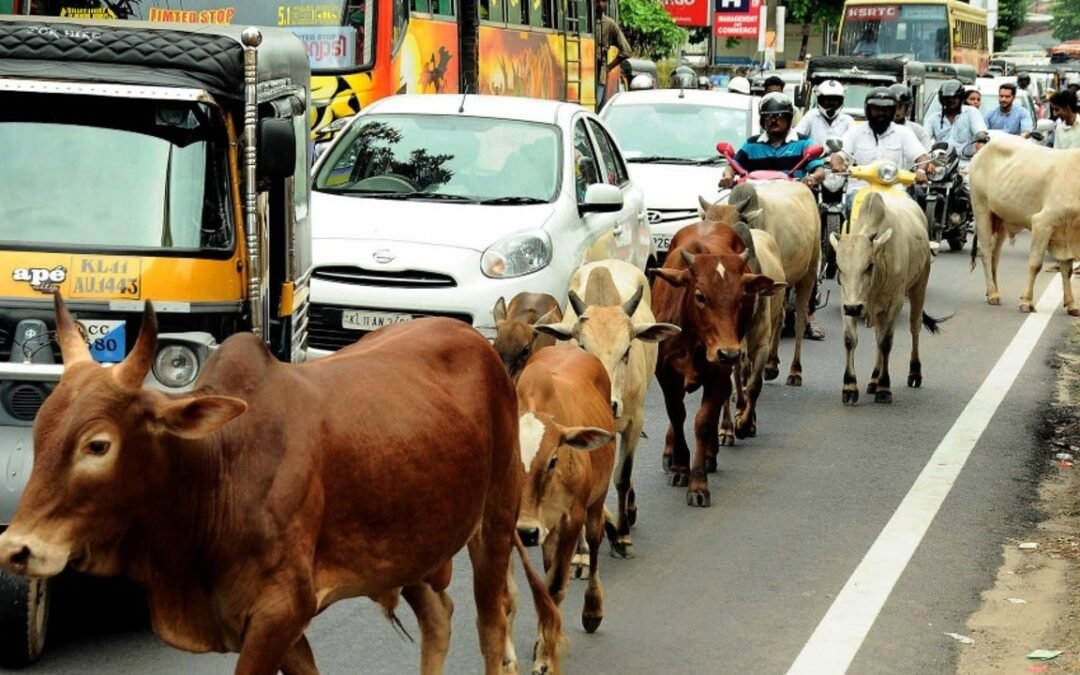India, often referred to as the land of sacred cows, is home to millions of bovines revered for their religious and cultural significance. Despite this deep-rooted respect, stray cows and bulls are a common sight on Indian streets, enduring hunger, injuries, and harsh living conditions. This paradox raises pressing questions about their welfare and our collective responsibility to protect them.
The Plight of Stray Cows and Bulls
- Urbanization and Habitat Loss: Rapid urbanization has encroached upon grazing lands, forcing many cows and bulls onto city streets. With no access to natural fodder, they rely on waste bins and scraps, often consuming harmful plastic and toxins.
- Abandonment: Many farmers abandon cows and bulls that no longer produce milk or are deemed unproductive, considering them financial burdens.
- Traffic Accidents: Stray cattle on roads are frequently involved in accidents, endangering their lives and posing risks to commuters.
- Health Issues: Without regular veterinary care, stray bovines suffer from untreated injuries, diseases, and malnutrition.
- Exploitation: Some stray bulls are used for illegal activities like bullfights or cart pulling under inhumane conditions.
Why Protecting Cows and Bulls Matters
- Cultural and Religious Significance: In Indian culture, cows symbolize nurturing and abundance, while bulls represent strength and perseverance. Caring for them aligns with the values of ahimsa (non-violence) and compassion.
- Ecological Role: Cattle play a vital role in sustainable agriculture by providing manure for organic farming and biogas production.
- Animal Rights: Every animal has the right to live with dignity, free from suffering and exploitation. Protecting stray cattle is a moral and ethical imperative.
How Can We Protect Stray Cows and Bulls?
- Establishing More Cattle Shelters:
- Gaushalas (cow shelters) can provide stray cattle with food, medical care, and a safe environment. Existing shelters should be expanded and new ones established in areas with a high density of stray cattle.
- Community-supported shelters can ensure financial sustainability through donations and government grants.
- Promoting Responsible Ownership:
- Farmers must be educated about the importance of humane treatment of aging or non-productive cattle.
- Incentives can be provided for adopting ethical practices like maintaining older cattle for organic farming needs.
- Implementing Sterilization Programs:
- Sterilization of stray bulls can help control the stray population without resorting to harmful or unethical methods.
- Ban on Plastic and Garbage Consumption:
- Strict enforcement of plastic bans and proper waste disposal systems can prevent cows from consuming harmful materials.
- Feeding zones with nutritious fodder can be set up in urban areas.
- Stronger Legislation and Enforcement:
- Laws protecting cattle need stricter enforcement to prevent abandonment and mistreatment.
- Severe penalties should be imposed for illegal activities involving cattle exploitation.
- Community Involvement:
- Local communities can play a significant role in rescuing and caring for stray cattle.
- Volunteer groups can work with veterinarians to provide medical aid and rehabilitation.
- Utilizing Technology:
- GPS-enabled collars can help track stray cattle and monitor their health.
- Digital platforms can connect donors, shelters, and rescuers to facilitate aid and adoption.
Success Stories to Inspire Action
- Gaushalas Across India: Numerous shelters across India provide a haven for abandoned cattle, demonstrating the impact of collective efforts.
- Innovative Models: Initiatives like using cow dung for biogas production or cow urine for organic pesticides showcase how bovines can contribute to a circular economy even after their productive years.
- Urban Feeding Programs: Cities like Jaipur and Ahmedabad have designated feeding spots for stray cattle, reducing accidents and improving their health.
The Way Forward
Protecting stray cows and bulls in India requires a multi-faceted approach involving government policies, community efforts, and individual responsibility. By addressing the root causes of their abandonment and suffering, we can ensure a safer and more compassionate environment for these animals.
This isn’t just about saving cattle—it’s about upholding the values of kindness, sustainability, and coexistence that form the backbone of Indian society. Together, we can bridge the gap between reverence and responsibility, creating a future where no cow or bull has to fend for survival on the streets.
Let’s honor their contributions to our lives by ensuring they lead lives of dignity and care.

